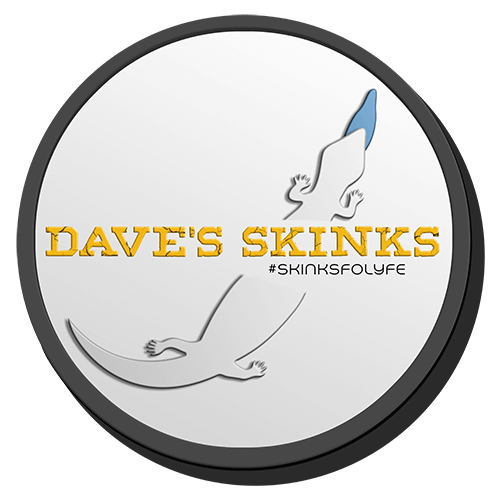Going Bioactive
- December 31, 2022
- 0 Comment(s)
I started really contemplating going bioactive in October 2021. Started doing my research, talking with other keepers doing it successfully. In February 2022, I made the move to acquire isopods. We went with 40 Dwarf White, 40 Powder Blue, and 40 Powder Orange. The youtube video on acquiring the isopods from Chicago friend, Damien, aka ChiefOfGains, and adding them to the first enclosure can be seen here.
I went with those three isopods because that’s what was offered on the house. If you look up the prices on isopods, they’ve really gone from nothing in value to something may need to save up for in just the past couple of years. Damien and I knew when we started this there would be a little trial and error which ones make it with an understanding some may fail to thrive. I was in favor of it going bioactive from a logistical and economical standpoint. Every year I was taking the tanks outside, one by one, dumping old substrate in the trash, sanitizing the enclosures, then rebuilding them with new substrate. It was costly, time-consuming, and required extra hands. With bioactive enclosures, the bugs maintain the bacterial levels in the enclosure and the substrate becomes their home. So you don’t change out the substrate.
There were some changes though. Isopods do well with organic topsoil. That now makes up 50% of my bioactive enclosures. I get the substrate from a garden store and bake it in the over at 285F for 45 minutes before considering it sanitary and safe for the reptile enclosure. Other substrates the isopods prefer are sphagnum moss and coco choir. In addition to eating the mold, poop, and bacteria in the enclosure, they also eat wood. Cork park, palm bark, and various leaf litter serve them well for both shelter and food supplementation. Look up what leaf litter you plan on going with first. Some can be harmful for a blue tongue. I went with large magnolia leaves.
At first, everything started well. Pretty much at the 90-day mark, the colonies were strong enough for some to migrate to a second tank and start a second isopod campus there. The first two tanks selected were Irian Jaya tanks because those have more humidity and the isopods don’t do well in a dry atmosphere. Maybe 75% humidity is what they prefer. But 50-70% would have to do because the skinks come first. After another 90 days the original tank had replenished and I could start a third bioactive enclosure but the second tank needed another 30 days before pulling isopods into a fourth tank. By the time I made it to brumation at the start of November, there were 9 total enclosures with isopods. But I noticed some pushback.
Of those 9, only the first two had colonies large enough to be transported to new tanks. There were an additional 3-4 tanks that had stable populations, but they were also not growing either. And another 3 or so with very small populations I was nervous may not make brumation. Somewhere in the middle of all this, Powdered Oranges just took over. The population was 90% Powder Orange, 8% Dwarf White, and 2% Powder Blue. The Blues need higher temps and humidity. With Northern and Irian Jaya Blue Tongues, I recommend springtails and Powder Orange isopods. But even still, brumation was tough. In brumation it gets cold and dry. Lights and heat are off. Fresh water is in the bowl, but I’m not adding humidity to the enclosure like normal, and the lizard isn’t splashing water over the edge. The first several weeks were fine. But then I started noticing escaped and deceased isopods all over the room. They were looking for a change and didn’t make it. When we started turning heat back on in the enclosure, only two tanks had stable populations. It will take some time to rebuild and learn from this past year’s mistakes. Definitely need to add more moisture during brumation.
Two behaviors exhibited concern me. One is a few of the skinks really took a liking to the isopods as food. While this is good for the lizard, it is not good to grow an isopod population that is designed to clean the enclosure. If the population never gets off the ground, the tank will become stagnant and bacteria-laden. More substrate is the solution. Just another half-inch all around was an improvement. The other issue concerns the lizard. The water bowl in the center of the enclosure was the main hub for the isopods. Water would sweat off the sides, drip from the edges, and create more moist pockets for them. Mold wasn’t an issue because the isopods ate whatever formed. The cork and leaves were placed in that general vicinity as well. The skink used to be king of the castle, roaming and parking its keester where ever it felt. But now I noticed more burrowing just on the cool and dry side, and spending time on the basking bricks on the hot side. They’d pass through the middle, but rarely lounge in it. Most felt more comfortable giving up the center space for the bugs. But the enclosure didn’t get any bigger. If I build more custom display enclosures, I would design larger tanks with the isopod/skink relationship in mind.
For now, I am going to continue pushing forward going bioactive, and will continue trying to learn as much as possible about their needs to thrive and how to make the most of the skink/isopod relationship so everyone is happy.
https://farmakeioellinika.gr/viagra-generic-choris-syntagi-online/

